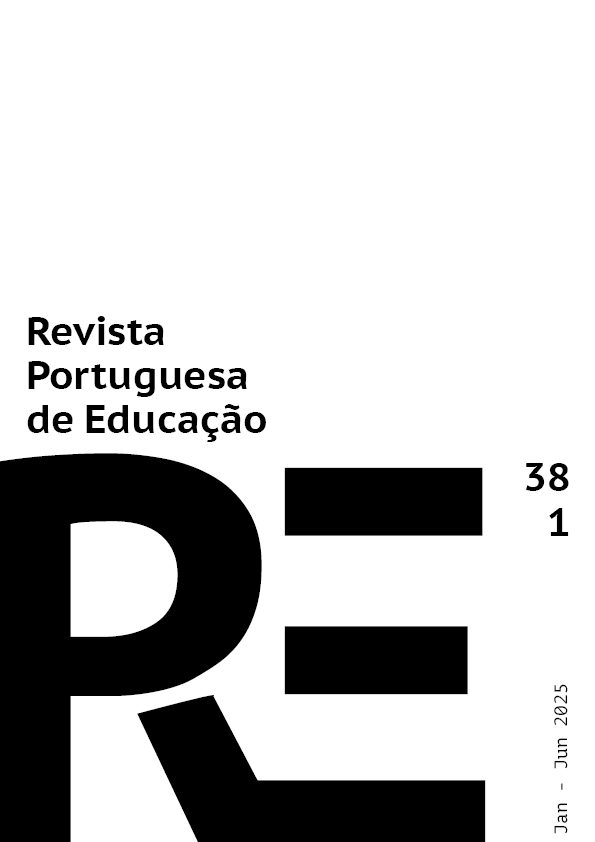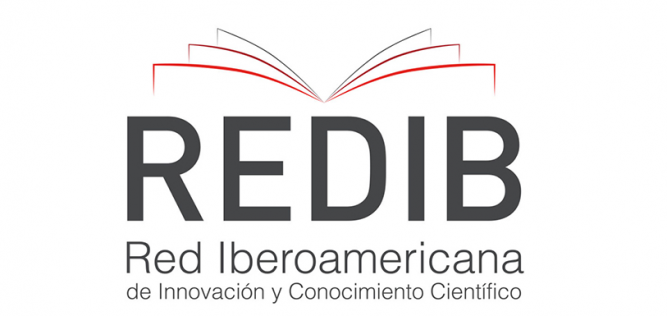From audiovisual projection to personal reflection: Can films really stimulate students' problem-solving abilities?
DOI:
https://doi.org/10.21814/rpe.33838Keywords:
Films, Students, Problem solving, EducationAbstract
This study explores the potential of films to stimulate problem-solving abilities, based on a case study with students aged 10 to 22 in the Azores Archipelago, Portugal. It investigates whether exposure to audiovisual projections, such as films, can encourage personal reflection, introspection and ultimately contribute to improving individual problem-solving abilities, a key aspect in contemporary education. A mixed-methods empirical research approach was used, applying a questionnaire to a diverse sample of students (N = 591). The study design consisted of exposing participants to a sequence of carefully selected animated short films, representative of the main youth issues, followed by debates. Then, the students were invited to complete an anonymous online questionnaire to observe their cognitive and emotional reactions. The results indicate a positive correlation between exposure to films and the construction of hypothetical problem-solving scenarios, with participants reporting new insights into handling potential future difficult situations in their own lives.
Downloads
References
Akram, A., O’Brien, A., O’Neill, A., & Latham, R. (2009). Crossing the line: Learning psychiatry at the movies. International Review of Psychiatry, 21(3), 267-268. https://doi.org/10.1080/09540260902746880
Appel, M., & Richter, T. (2010). Transportation and need for affect in narrative persuasion: A mediated moderation model. Media Psychology, 13(2), 101-135. https://doi.org/10.1080/15213261003799847
Bauer, M. W., & Gaskell, G. (Eds.). (2015). Qualitative researching with text, image and sound: A practical handbook for social research. Sage Publications.
Blasco, P. G., Blasco, M. G., Levites, M. R., Moreto, G., & Tysinger, J. W. (2011). Educating through movies: How Hollywood fosters reflection. Creative Education, 2(3), 174-180. https://doi.org/10.4236/ce.2011.23024
Blasco, P. G., Moreto, G., Blasco, M. G., Levites, M. R., & Janaudis, M. A. (2015). Education through movies: Improving teaching skills and fostering reflection among students and teachers. Journal for Learning through the Arts, 11(1), 1-16. https://doi.org/10.21977/D911122357
Bordwell, D. (2013). The viewer’s share: Models of mind in explaining film. In A. P. Shimamura (Ed.), Psychocinematics: Exploring cognition at the movies (p. 29-52). Oxford University Press. https://doi.org/10.1093/ACPROF:OSO/9780199862139.001.0001
Boydell, K. M., & Croguennec, J. (2022). A creative approach to knowledge translation: The use of short animated film to share stories of refugees and mental health. International Journal of Environmental Research and Public Health, 19(18), e11468. https://doi.org/10.3390/ijerph191811468
Brown, T. (2011). Using film in teaching and learning about changing societies. International Journal of Lifelong Education, 30(2), 233-247. https://doi.org/10.1080/02601370.2010.547615
Cardoso, G. (2023). A comunicação da comunicação: As pessoas são a mensagem. Mundos Sociais. http://hdl.handle.net/10071/31443
Carroll, N. (2008). The philosophy of motion pictures. Blackwell Publishing.
Castells, M. (2010). The rise of the network society (2nd Ed., Vol. I). Blackwell Publishing. https://doi.org/10.2307/1252090
Cinema Sem Conflitos. (2022a). Mostra Cinema Sem Conflitos 2022 - Official website. Retrieved from https://cinemasemconflitos.pt/2022/
Cinema Sem Conflitos. (2022b). Screening program - Mostra Cinema Sem Conflitos 2022 Retrieved from https://cinemasemconflitos.pt/2022/PROGRAMA-MCSC2022.pdf
Cohen, J. (2018). Defining identification: A theoretical look at the identification of audiences with media characters. In R. Wei (Ed.), Advances in foundational mass communication theories (pp. 253–272). Routledge. https://doi.org/10.4324/9781315164441-14
Cohen, L., Manion, L., & Morrison, K. (2007). Research methods in education (6th Ed.). Routledge. https://doi.org/10.4324/9780203029053
Costa, D. A. (2017). O cinema no ensino de competências socioemocionais: Um guia didático para professores (Vol. 1). Instituto Federal do Amazonas.
Esmail, S., & Matthews-Roper, M. (2022). Lights, camera, reaction: Evaluating extent of transformative learning and emotional engagement through viewer-responses to environmental films. Frontiers in Education, 7, e836988. https://doi.org/10.3389/feduc.2022.836988
Goleman, D. (1995). Emotional intelligence. Bantam Books.
Goodwin, J., Bradley, S. K., Donohoe, P., Queen, K., O’Shea, M., & Horgan, A. (2019). Bullying in schools: An evaluation of the use of drama in bullying prevention. Journal of Creativity in Mental Health, 14(3), 329-342. https://doi.org/10.1080/15401383.2019.1623147
Griffin, E., Ledbetter, A. M., & Sparks, G. G. (2018). A first look at communication theory (10th Ed.). McGraw-Hill Education.
Grodal, T. (2006). The PECMA flow: A general model of visual aesthetics. Film Studies, 8(1), 1-11. https://doi.org/10.7227/fs.8.3
Grodal, T. (2017). How film genres are a product of biology, evolution and culture: An embodied approach. Palgrave Communications, 3, e17079. https://doi.org/10.1057/palcomms.2017.79
Gutiérrez Moar, M. C., Pereira Domínguez, M. C., & Valero Iglesias, L. F. (2006). El cine como instrumento de alfabetización emocional. Teoría de La Educación: Revista Interuniversitaria, 18, 229-260. https://doi.org/10.14201/3219https://doi.org/10.1057/palcomms.2017.79
Hanich, J. (2021). How many emotions does film studies need? A Phenomenological proposal. Projections: The Journal for Movies and Mind, 15(2), 91-115. https://doi.org/10.3167/proj.2021.150204
Libertson, F. (2023). Inner transitions in higher education in Sweden: Incorporating intra-personal skills in education for sustainable development. International Journal of Sustainability in Higher Education, 24(9), 213-230. https://doi.org/10.1108/IJSHE-12-2022-0395
Mangot, A. G., & Murthy, V. S. (2017). Cinema: A multimodal and integrative medium for education and therapy. Annals of Indian Psychiatry, 1(1), 51-53. https://doi.org/10.4103/aip.aip_13_17
McQuail, D. (2010). McQuail’s mass communication theory (6th Ed.). Sage Publications.
Morris, B. S., Chrysochou, P., Christensen, J. D., Orquin, J. L., Barraza, J., Zak, P. J., & Mitkidis, P. (2019). Stories vs. facts: Triggering emotion and action-taking on climate change. Climatic Change, 154(1–2), 19-36. https://doi.org/10.1007/s10584-019-02425-6
O’Toole, J., & Burton, B. (2002). Cycles of harmony: Action research into the effects of drama on conflict management in schools. Applied Theatre Researcher, 3. http://hdl.handle.net/10072/6616
Oh, J., & Steefel, L. (2016). Nursing students’ preferences of strategies surrounding cinenurducation in a first year child growth and development courses: A mixed methods study. Nurse Education Today, 36, 342-347. https://doi.org/10.1016/j.nedt.2015.08.019
Petkari, E. (2017). Building Beautiful Minds: Teaching Through Movies to Tackle Stigma in Psychology Students in the UAE. Academic Psychiatry, 41(6), 724–732. https://doi.org/10.1007/s40596-017-0723-3
Silva, R. B., Rodrigues, J. A., & Gouveia, I. R. (2023). From conception to implementation: How the ‘Cinema Without Conflict Showcase’ inspired change in Azorean schools. 14, 8. https://publication.avanca.org/index.php/avancacinema/article/view/521/1024
Sipsock, D., & Storey, K. (2019). Film as an educational modality of psychiatry. The Brown University Child and Adolescent Behavior Letter, 35(6), 1-6. https://doi.org/10.1002/CBL.30383
Szita, K. (2019). Smartphone cinematics: A cognitive study of smartphone spectatorship. University of Gothenburg. http://www.tara.tcd.ie/handle/2262/99565
Tan, E. S. (2013). Emotion and the structure of narrative film: Film as an emotion machine. Routledge. https://doi.org/10.4324/9780203812761
Torrego Seijo, J. C. (Ed.). (2003). Mediação de conflitos em instituições educativas: Manual para formação de mediadores (J. C. Eufrásio, Trad.). ASA.
UNESCO. (2017). Education for sustainable development goals: Learning objectives [Report]. UNESCO. https://doi.org/10.54675/cgba9153
Utomo, P., & Maratus, S. (2021). The effectiveness of using educational cinema techniques to increase students’ self-confidence: An experimental research. ProGCouns: Journal of Professionals in Guidance and Counseling, 2(2), 51-61. https://doi.org/10.21831/progcouns.v2i2.41101
Zheltukhina, M. R., Kislitsyna, N. N., Tameryan, T. Y., Baranova, K. M., Chupryna, O. G., & Sergeeva, O. V. (2023). Identity construction and self-identification of the protagonist in the film media discourse: Multi-modal linguo-semiotic approach. Online Journal of Communication and Media Technologies, 13(3), e202323. https://doi.org/10.30935/OJCMT/13096
Downloads
Published
How to Cite
Issue
Section
License
Copyright (c) 2025 Ricardo Braga Silva, Paulo Miguel Martins

This work is licensed under a Creative Commons Attribution-ShareAlike 4.0 International License.
1. The authors preserve their authorship and grant the Portuguese Journal of Education the right to the first publication. The work is licensed under Creative Commons Attribution License that allows sharing the work with the acknowledgment of initial authorship and publication in this Journal.
2. The authors have the right to take additional contracts separately, for non-exclusive distribution of the published version of their work (e.g. to deposit in an institutional repository or as a book chapter), acknowledging the initial authorship and publication in this Journal.
3. The authors have the permission and are stimulated to post their work online (e.g. in an institutional repository or on their personal website). They can do this at any phase of the editorial process, as it may generate productive changes, as well as increase impact and article citation (see The Open Citation Project).
The work is licensed under Attribution-ShareAlike 4.0 International (CC BY-SA 4.0)




















